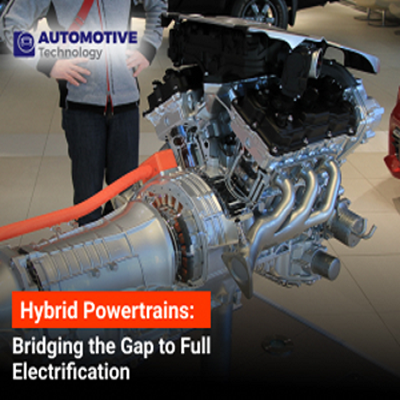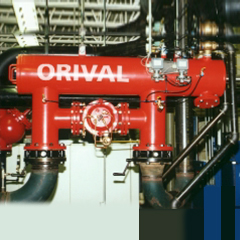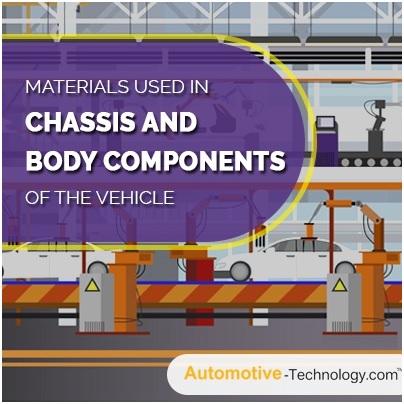Articles
Hybrid Powertrains: Bridging the Gap to Full Electrification

Introduction
In recent years, the global automotive industry has witnessed a revolutionary shift towards more sustainable and eco-friendly transportation solutions. This transformation has primarily focused on the advancement of electric vehicles (EVs) as a means to reduce carbon emissions and combat climate change. However, the mass adoption of fully electric vehicles is still impeded by certain challenges, such as limited charging infrastructure concerns over battery technology and range anxiety. In this context, hybrid powertrains have emerged as a vital intermediary step, offering a practical and efficient compromise between traditional internal combustion engines and fully electric vehicles. This article seeks to provide a comprehensive understanding of hybrid powertrains, highlighting their benefits, applications, and their pivotal role in bridging the gap to full electrification.
Understanding Hybrid Powertrains
Hybrid powertrains combine the use of both internal combustion engines and electric motors, enabling vehicles to run on either or both power sources. This integration leads to better fuel efficiency, decreased emissions, and overall improved performance. Different types of hybrid systems, such as parallel hybrids, series hybrids, and plug-in hybrids, cater to various driving needs and preferences. By incorporating these dual power sources, a more eco-friendly mode of transportation has emerged, without entirely sacrificing the convenience and familiarity of conventional fuel-based vehicles.
Benefits of Hybrid Powertrains
1. Improved Fuel Efficiency: One of the primary advantages of hybrid powertrains is their ability to significantly enhance fuel efficiency compared to conventional vehicles. By utilizing both electric and internal combustion engines, hybrids can optimize fuel consumption, thereby reducing the overall operational costs for consumers.
2. Reduced Environmental Impact: The integration of electric motors in hybrid powertrains contributes to a substantial reduction in harmful emissions, making them a more eco-friendly option compared to traditional gasoline or diesel-powered vehicles. This reduction in emissions aids in minimizing the carbon footprint and combating air pollution, thereby fostering a cleaner and healthier environment.
3. Improved Driving Experience: Hybrid vehicles facilitate a smooth transition for consumers accustomed to traditional cars by not solely depending on charging infrastructure. This feature reduces range anxiety and ensures a more convenient and seamless driving experience, catering to the diverse needs of consumers.
4. Regenerative Braking: Another notable feature of hybrid powertrains is their utilization of regenerative braking technology. This innovative mechanism allows the vehicle to recover kinetic energy during braking, subsequently converting it into electrical energy to recharge the battery. This process not only enhances energy efficiency but also extends the overall driving range of the vehicle, making it a more sustainable and economical choice for consumers.
The Role of Hybrid Powertrains in the Path to Full Electrification
While the global shift towards full electrification is inevitable, the widespread adoption of electric vehicles is hindered by several constraints, including the lack of robust charging infrastructure, high initial costs, and concerns over battery technology and performance. Hybrid powertrains play a crucial role in bridging this gap by providing an effective and practical solution that combines the advantages of electric propulsion with the convenience and familiarity of traditional refueling methods. This approach enables consumers to gradually transition to electric vehicles without experiencing significant changes in their driving habits or lifestyle choices. Hybrid powertrains, therefore, serve as an essential catalyst in encouraging a more sustainable and eco-conscious approach to personal transportation, paving the way for a cleaner and greener automotive landscape.
Challenges and Future Developments
Despite the numerous advantages offered by hybrid powertrains, their implementation does come with certain challenges. The integration of dual power sources adds complexity to the vehicle's design and manufacturing, potentially leading to increased maintenance costs and higher initial purchase prices. Furthermore, optimizing the performance of both power sources while maintaining fuel efficiency poses an ongoing engineering challenge for automakers and researchers alike.
In response to these obstacles, the automotive sector is persistently dedicating resources to research and development, focusing on the progression of battery technology, the enhancement of motor efficiency, and the streamlining of power management systems. These efforts are geared towards improving the overall effectiveness and eco-friendliness of hybrid vehicles, ultimately fostering the creation of transportation solutions that are more efficient, cost-effective, and environmentally conscious. As technological advancements continue to unfold, the future presents exciting prospects for additional breakthroughs and developments in hybrid powertrain technology, expediting the transition to a transportation ecosystem that is both cleaner and more sustainable.
Conclusion
In summary, hybrid powertrains have become a practical and sustainable solution, acting as a crucial bridge in the move toward complete electrification. By harnessing the benefits of electric and internal combustion engines, hybrid vehicles provide consumers with a viable and environmentally friendly option compared to conventional gasoline-powered cars, thereby addressing the challenges associated with the widespread acceptance of fully electric vehicles. As the automotive industry persists in prioritizing sustainability and environmental awareness, the advancement of hybrid powertrain technology will play a central role in shaping the future of personal transportation, ultimately contributing to a more sustainable and eco-friendly global ecosystem.




